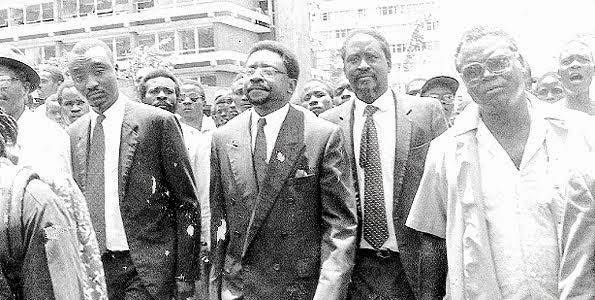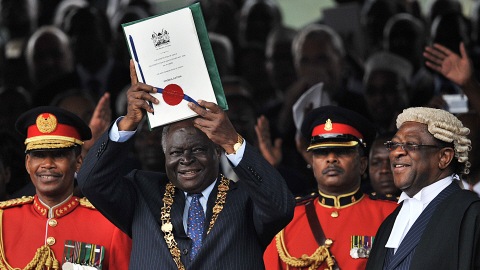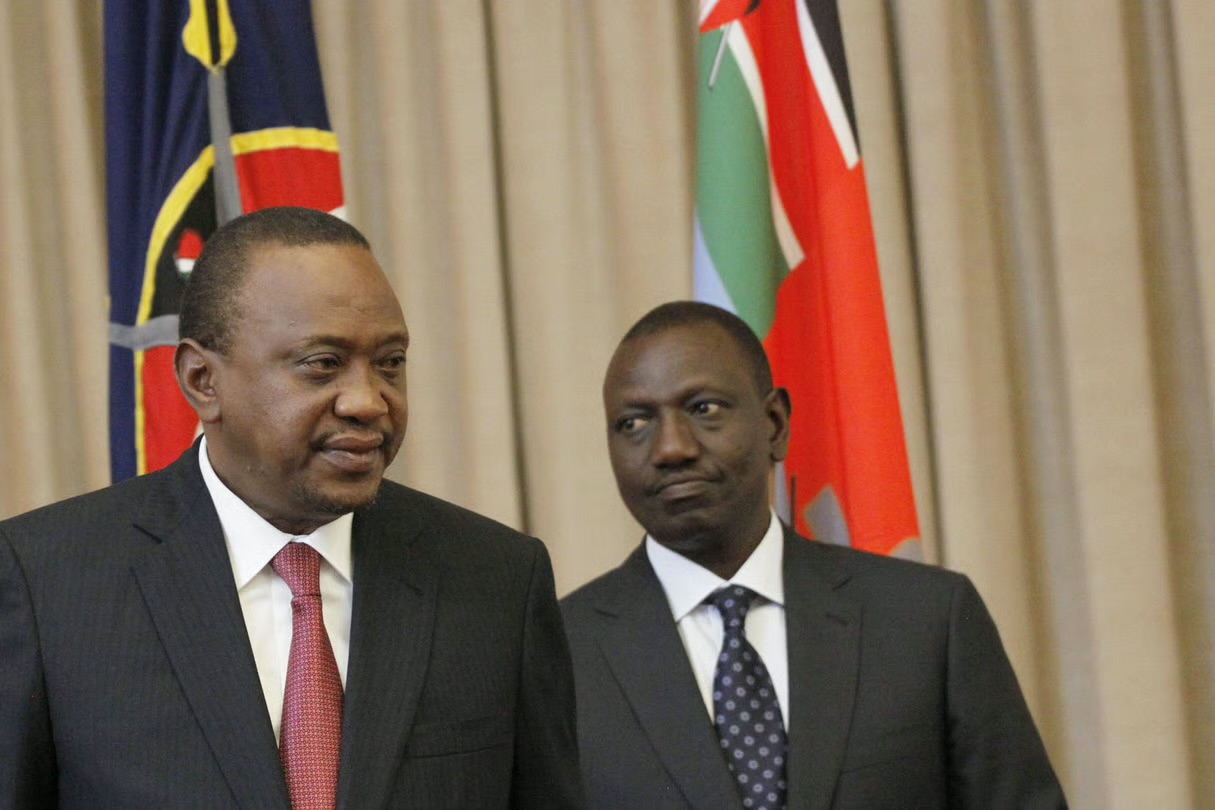The revolution, if it is to bear fruit, must unfold with unyielding fidelity to its core principles. No amount of coercive cajoling toward superficial alliances with known collaborators and betrayers of the public trust can sway a people seasoned by the bitter lessons of history.
We are neither naive nor untested; we recognize that such overtures lead only to a desolate cul-de-sac, a betrayal of the collective aspiration for transformative change.
The insidious imposition of a manufactured consensus, cloaked in the seductive guise of unity, has ensnared Kenya in a relentless cycle of impoverishment and stagnation.

These activist-opportunists were feted by the Danish embassy and profited from the death’s of Gen Z’s. We are now being emotionally-blackmailed to “unite” with them and bring down Ruto
The opposition’s myopic fixation on ephemeral victories, rather than enduring systemic reform, has allowed each successive wave of change to be co-opted, diluted, and ultimately neutered.
The Litany of False Dawns
The annals of Kenya’s struggle are littered with the wreckage of illusory triumphs, each heralded as a new dawn yet swiftly extinguished by the machinations of entrenched power.
In 1991, the fervent clamor for multiparty democracy, trumpeted as the harbinger of a liberated era, was undermined by the venom of divisive politicking. The opposition, once a unified front, fractured under the weight of competing ambitions, its promise reduced to ashes.

FRAUDULENT OPPOSITION: Gitobu Imanyara, James Orengo, Raila Odinga and the bandwagon of “leaders” who squandered the 90’s wave of change
By 1997, the resolute cry of “No Reforms, No Elections” reverberated across the nation, a bold stand against autocratic entrenchment. Yet, this movement too was subverted, its leaders blackmailed and seduced into accepting paltry concessions. Their singular focus on ousting Daniel arap Moi, rather than dismantling the sclerotic institutions that propped him up, rendered their efforts futile, a mere prelude to further disillusionment.
The year 2002 brought the intoxicating mantra of “Yote Yawezekana Bila Moi” “Everything is Possible Without Moi.” This slogan, radiant with hope, promised a radiant future.
Yet, within two years, the fragile coalition of the National Rainbow Coalition (NARC) unraveled, its architects descending into internecine squabbles over the structure of a new constitution. The haste and opportunism that birthed this alliance sowed the seeds of its own destruction, culminating in the cataclysmic violence that engulfed Kenya in the aftermath of the 2007-2008 elections.
What was meant to be a new covenant for the nation became a crucible of chaos.
In 2010, weary from conflict and manipulated by a carefully orchestrated narrative of “fatigue,” Kenyans were persuaded to adopt a constitution riddled with flaws, sold as the key to unlocking an economic renaissance akin to the Asian tigers.

Touted as the “dawn of a new era” the 2010 constitution has only managed to devolve corruption
Instead, this document became a trojan horse, enabling two successive despotic regimes to exploit legal ambiguities, erode checks and balances, and entrench a de facto dictatorship.
Far from liberating the nation, it has shackled Kenya to a predatory globalist agenda, sacrificing productivity, industrialization, and the livelihoods of its people at the altar of foreign interests.
The Fallacy of Contrived Consensus
The transient suspension of rivalries in pursuit of short-term gains has not saved Kenya; it has plunged the nation deeper into the abyss. Today, we stand worse off than in the Moi era, our sovereignty eroded, our potential plundered.

WAR CRIMINALS: Uhuru Kenyatta and William Ruto have mutilated the 2010 constitution and converted it into a piece of (toilet) paper
Kenya has been reduced to a colonial outpost, its resources and aspirations subordinated to the caprices of globalist overlords.
The evidence of this decline is stark, yet the collective consciousness remains clouded by distraction and denial.
William Ruto, the ostensible leader, is a defeated figure, his authority eroded by the tides of popular resistance. His once-frequent international jaunts have dwindled, a silent acknowledgment of his diminished stature. The clergy, once pliant allies, have largely forsaken him, save for a few sycophantic holdouts. His attempts to co-opt the vibrant pulse of Kenya’s arts and music scene have faltered, met with disdain. His public appearances are marred by hostility shoes hurled in defiance, crowds that must be bribed to feign loyalty.
These are the desperate convulsions of a regime in its death throes, a hollow facsimile of power sustained only by artifice.
The True Adversaries
Yet, Ruto is no longer the primary threat. The real danger lies in the opportunists lurking in the shadows, poised to exploit the collective agency of a weary yet resolute people.

The primary threat to Kenya’s true liberation is currently Rigathi Gachagua
Foremost among them is Rigathi Gachagua, a figure cloaked in duplicity, who seeks to whitewash his past transgressions by bribing bloggers, TikTokers, and journalists to weave a false narrative of redemption.
Then there are the aging warlords of the opposition, masquerading as champions of the people, their tenures marked by nothing but inertia and self-interest. Most insidious of all is the specter of Fred Matiang’i, a technocrat tethered to the World Bank’s agenda, poised to perpetuate Kenya’s entrapment in a vicious cycle of debt and dependency.

BOOMER FRAUDS: This collective of opportunists pose a bigger threat than William Ruto
These are the vultures circling the carcass of our struggle, ready to feast on the fruits of our collective sacrifice. Ruto was subdued on June 25th, his legitimacy shattered, yet too many Kenyans cling to the anachronistic title of “President” as if it still holds meaning.
The world has moved on, adjusting to the reality of his obsolescence, while we remain mired in delusion.
The Path Forward
The revolution must not be swayed by the siren song of cosmetic collaboration or the illusion of unity with those who have betrayed us. It demands a steadfast commitment to structural and institutional overhaul, a rejection of the ephemeral in favor of the enduring.
We must pierce the veil of suppressed truths, reclaim the imagery of our collective consciousness, and forge a future untainted by the failures of the past.
Only then can Kenya rise from the ashes of its false dawns, a sovereign nation unshackled from the chains of exploitation and deceit.
The revolution is not a destination but a journey one that requires courage, clarity, and an unwavering resolve to see it through to its rightful end.

